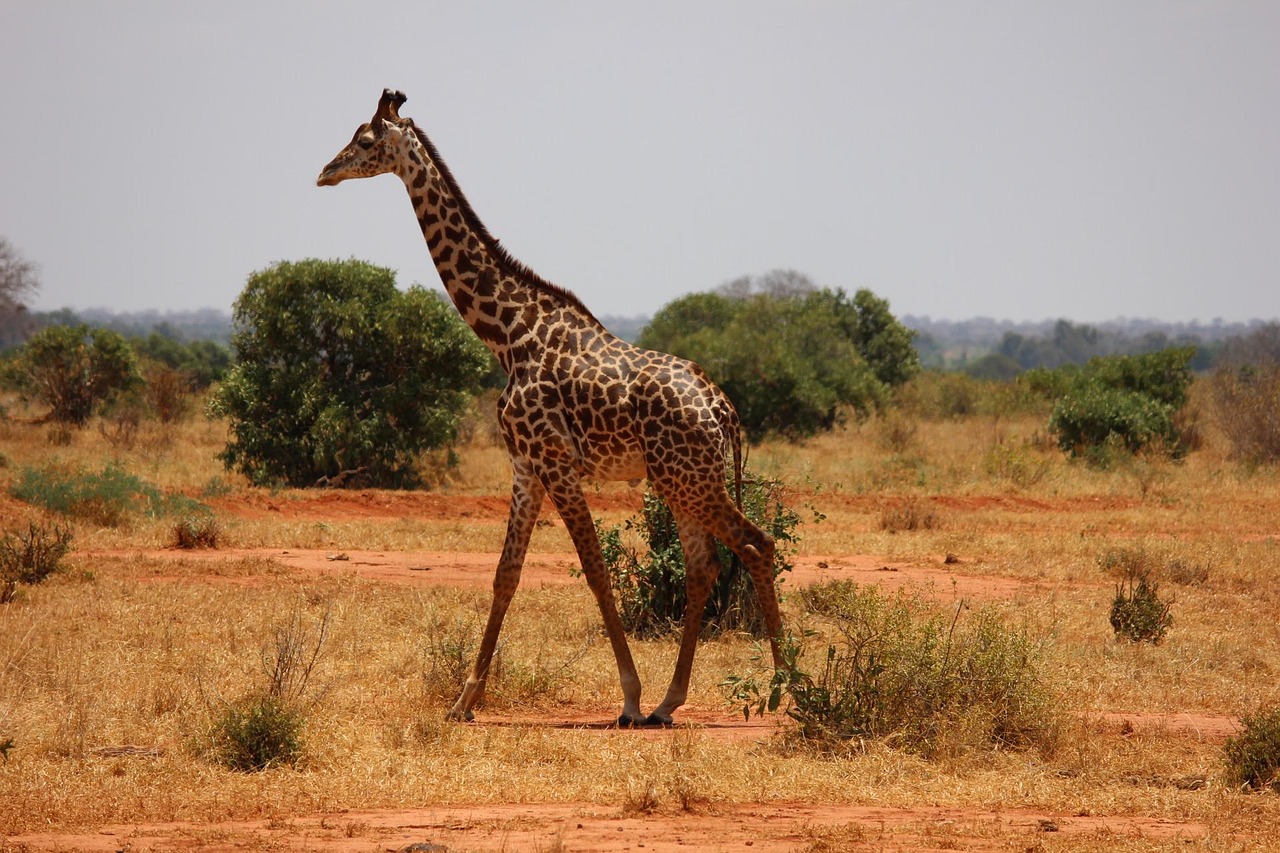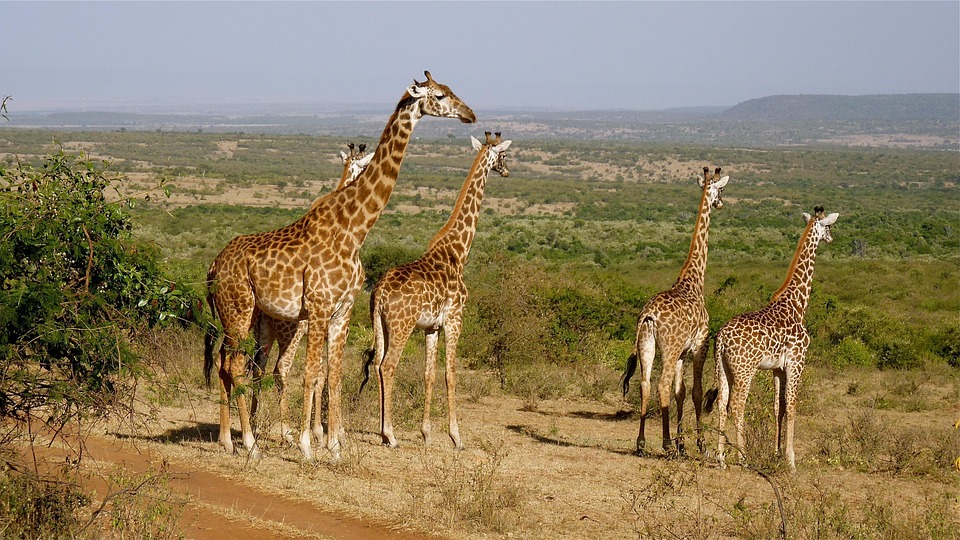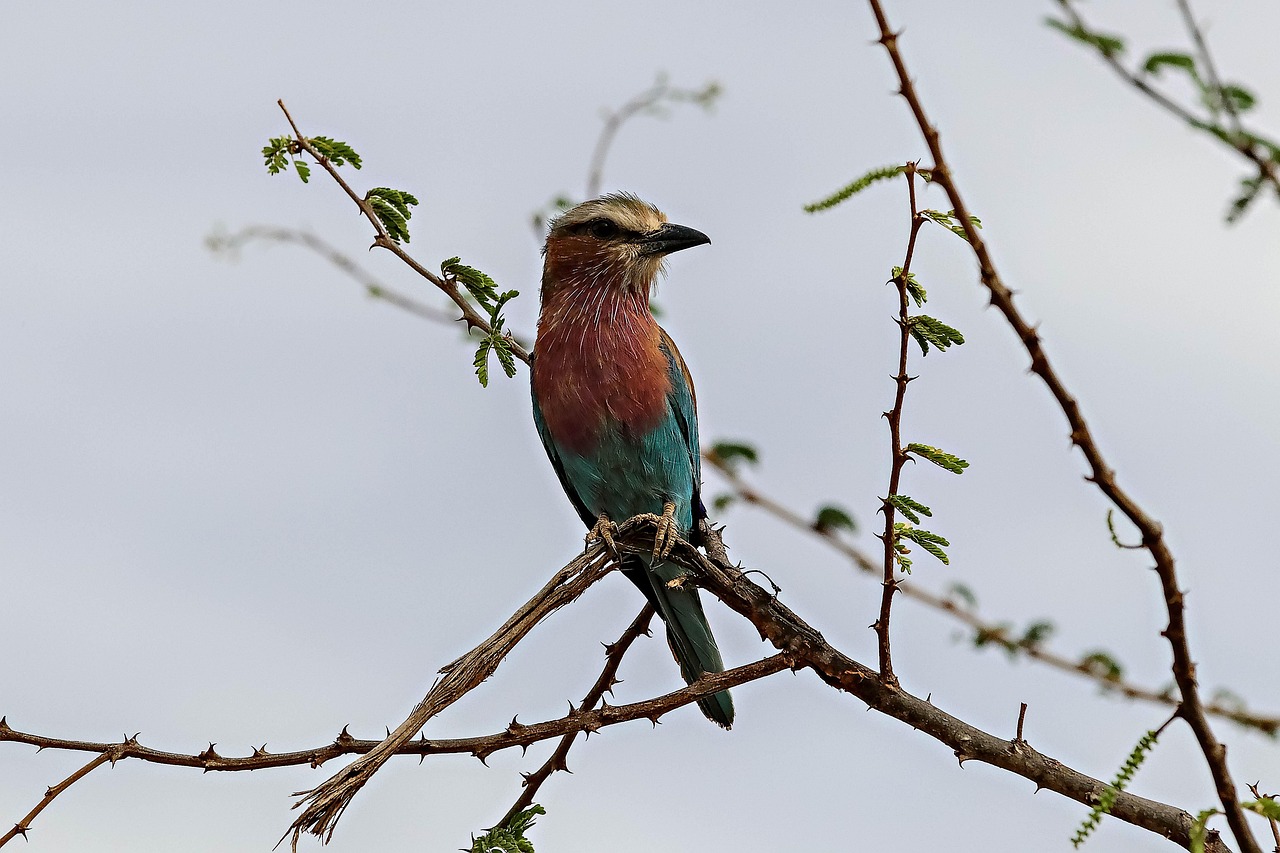SHABA NATIONAL RESERVE, A REMOTE WILDERNESS

Shaba National Reserve, established in 1974, is one of the top national reserves in Isiolo County in northern Kenya that travelers must visit on their Kenya vacation.
It shares the same ecosystem as Samburu NR and Buffalo Springs National Reserve since these three reserves are located close to each other.
Immerse yourself in the picturesque landscapes of the reserve, featuring dry bushlands, hills, mountains, river-side forests, scattered woodlands, and dry grasslands dominated by the Shaba volcano.
The many breathtaking landscapes make the reserve famous rather than its wildlife. For this reason, Shaba is less visited than other reserves in Kenya, and it offers seclusion, especially for tourists interested in wildlife safaris.
Explore the captivating expanse of open grasslands dotted with springs, deep gorges, waterfalls, swamps, rocky hills, dusty plains, and lava boulders. Stand in awe as the grand Shaba volcano looms large over this stunning terrain.
Encounter a diverse range of unique flora and fauna, including the endangered William’s lark and Grevy’s zebra.
On a tour to this place, you will explore the iconic setting of renowned films and shows like Born Free, Out of Africa, and Survivor Africa.
Location of Shaba National Reserve
Shaba National Reserve is located in Isiolo County in northern Kenya, and it lies 9 km east of Buffalo Springs National Reserve.
The two reserves are separated by the main Isiolo-Marsabit road, and they can be visited on the same Kenyan safari.
It is located east of Samburu and situated just 70 km north of Mount Kenya. The reserve covers an area of 130 square kilometers north of the Ewaso Ngiro River.
Geography of Shaba National Reserve
Shaba National Reserve, located between coordinates 0°38′24″N 37°49′48″E, is a semi-desert with sandy soils, isolated hills, and many springs.
In the south, the enchanting Shaba Hills rise gracefully to 2,145 m, contrasting with the serene scenery. This stunning sight captivates visitors on a Kenya adventure safari, highlighting the region’s beauty.
Climate and Weather
The annual rainfall received in the reserve is between 250 mm (9.8 in) and 500 mm (20 in). The average daytime temperature is around 30°C (86°F), while the night temperatures are around 18°C (64°F).
Management of the Shaba National Reserve
The Shaba National Reserve is managed by the Isiolo County council but under the supervision of the Kenya Wildlife Service (KWS).
The responsibility for managing the reserve by Isiolo County includes overseeing its operations and conservation efforts, and ensuring visitors have the best experience on their Kenyan trip to the reserve.
The council is also working on a comprehensive management plan to see that there is more community engagement, infrastructural development, and visitor management.
Amazing Things to See at Shaba National Reserve

There are numerous things to see while at Shaba NR
Wild Animals in Shaba NR
Shaba has relatively low numbers of wildlife compared to other national parks in Kenya, but the main attractions include Reticulated giraffe, Beisa oryx, Somali ostrich, Grevy’s zebra, and gerenuk, known as the Northern Five.
Though there is less wildlife, you will have an opportunity to see four out of the big five, including elephants, buffalo, leopard, and large prides of lions, which can be spotted in thickets of toothbrush trees.
Other beasts are cheetahs, hyenas, bat eared foxes, dik-diks, and vervet monkeys, and crocodiles can also be seen at the Ewaso Nyiro River, and many others make game viewing more interesting. All these animals are worth seeing on a Kenya wildlife safari.
Shaba’s Bird Life
This protected area is a birder’s paradise with over 390 bird species, many unique to the area that are worth seeing on a Kenya birding tour.
The common birdlife in Shaba National Reserve includes large flocks of helmeted and vulturine guinea fowl, marabou storks, and thousands of sandgrouse and doves.
Other birds include black-capped social weaver, black-fenced sandgrouse, pygmy batis, D’Arnaud’s barbet, greater kestrel, red-bellied parrot, black-bellied sunbird, golden pipit, palm-nut vulture, golden-breasted starling, pink-breasted lark, and red-necked falcon, among others.
Shaba Hill Volcano
This hill is one of the region’s stunning features, offering a wonderful panoramic view of the reserve’s landscape. It is from this hill that the reserve gets its name, “Shaba.”
The Ewaso Nyiro River
This is the main water source in the area, which is another amazing thing to see when you visit Shaba National Reserve.
It runs along the northern border of the reserve for 34 km and serves as the primary water source in the reserve, allowing both plant and animal life to flourish despite the surrounding arid conditions.
The Ewaso Ng’iro River is a good place to see Nile crocodiles during wildlife spotting efforts, together with other beasts that congregate to drink water.
Its presence favors the growth of doum palms, riverine forests, and acacia woodlands, nurturing a vibrant riparian ecosystem.
The Samburu Local People and Their Culture
Isiolo County, where Shaba Reserve is located, is home to the Samburu tribesmen. Visiting this reserve on a Kenya cultural experience offers a great opportunity to see their cultural performances and their handmade crafts.
Visitors to Isiolo also have chances of buying already-made items, among others, something that will immerse them in the Samburu culture.
Interesting Things to Do in Shaba National Reserve
Visitors on a Kenya vacation have a lot to do when they visit Shaba National Reserve, making their safari unforgettable. Among the things to do are;
Game Drive
Game drives in Shaba NR involve the use of 4X4 safari vehicles to traverse through the terrain to see the park’s picturesque landscapes, flora, and fauna.
The reserve offers three options for game viewing, which are morning, afternoon, and full-day drives, providing adventurous experiences of exploring the reserve’s scenery and wildlife.
These safari drives are the easiest way for visitors on a wildlife safari in Kenya to spot the different beasts in their natural habitat and as they graze in the field.
Morning and evening game drives are another great moment to enjoy the sunrise and sunset as you capture great scenes and stunning landscapes.
This reserve in northern Kenya also offers full-day safari drives, which allow visitors to dive into the adventure. However, afternoon drives tend to be more challenging because different beasts often seek shade to escape the scorching sun.
Among the commonly spotted wildlife species on a game drive are Grevy’s zebra, elephants, giraffes, buffalo, leopards, cheetahs, and lions, among others.
Bird Watching

Shaba National Reserve is a birders’ paradise, with numerous bird species often seen on a Kenya birding safari.
Shaba is a perfect year-round destination for birding, particularly for watching the resident dry-country species. It is also home to migratory birds that come to the reserve, especially during the wet season.
Among the commonly spotted birds are sandgrouse, black-faced sand grouse, Vulturine guinea fowl, marabou stork, D’arnaud’s barbet, pygmy batis, red-bellied parrot, red-necked falcon, and black-capped social weaver, among others.
The best times for birdwatching in Shaba are during the dry seasons, particularly from June to September and January to February. However, the wet season is also good to spot the migratory birds since it is their arrival time.
Guided Nature Walk
Guided nature walks are another fascinating thing to do while in Shaba Reserve on a walking safari in Kenya, where visitors can discover the reserve’s epic landscapes.
Nature walks offer an opportunity for travelers to discover the flora and fauna in the reserve. It is a wonderful time to gaze at beautiful wildflowers, bird nests, reptiles, and amphibians, among others.
With the help of experienced guides, you will also learn about different plants with medicinal properties. Nature walks will help you discover many other attractions that you may miss on a game drive.
Cultural Tours with the Samburu
The Samburu locals surround Shaba National Game Reserve, providing visitors with an engaging and vibrant cultural experience through their performances. These cultural encounters with the Samburu people provide tourists with insights into their traditions and way of life.
Visitors to the reserve get enough time to interact with these locals, learn how to make jewelry, learn how to throw a spear, and do cattle herding, among other practices.
Since the Samburu locals are pastoralists, there are chances of seeing them watering camels and cattle and tending to them.
You can conclude your fascinating cultural tour by purchasing handcrafted items from the Samburu, allowing you to fully immerse yourself in their unique culture.
Best Accommodation Options at Shaba NR
There are good and comfortable accommodation options around Shaba Reserve, which range from luxury, mid-range, and budget options.
Luxury Accommodations
These accommodation options offer superior comfort, personalized service, and amenities at a higher price.
The luxury accommodations in Shaba include
- Joy’s camp
- Sarova Shaba Lodge (Sarova Shaba Game Lodge)
- Saruni Samburu
- Ashnil Samburu Camp
Midrange Accommodations
Midrange accommodations offer a balance between luxury and budget accommodations, and the cost of amenities and services is slightly lower than that charged by luxury accommodations.
The midrange accommodations include
- Lions Cave Camp
- Sun and Sand Beach Resort
- Women Hotel
- Silver Bells Hotel
Budget Accommodations
These are midsize properties that offer basic facilities and services at a low price.
The budget accommodations in Shaba include
- Sinteti Hotel
- Grande Hotel
- Camel’s Gate Lodge and Cafe.
It is advisable to book your accommodation in advance before the peak season, when prices rise.
Best Time to Visit the Shaba Reserve
The Dry Season
The best time to visit Shaba Reserve when on a Kenya trip is the long dry months (June to September) and the short dry months, January and February.
The mildest temperatures occur from June to September, and hotter temperatures occur in January and February.
During this time, the vegetation thins, making it easy to spot animals in the reserve, and high concentrations of these animals gather around the Ewaso Nyiro River.
It is also the best time because the absence of water during dry season periods reduces the risk of malaria.
It is from January to March and July to September when tourist numbers increase due to favourable weather. This makes the dry months the best time for a safari to Shaba NR.
Wet Season
Though the hot season is the prime time to visit the reserve, some travelers visit during the rainy season, which occurs from March to May and from November to December.
However, the heavy rains during the wet season disrupt safari plans and activities, which makes it less ideal for wildlife viewing and some other safari activities.
During the rainy season, the tourist numbers are lower due to challenging weather conditions such as flooding, muddy roads, among others.
Shaba National Reserve Park Fees
| Category of visitor | Adults | Children |
| Non-Resident | $70 | $40 |
| Kenyan citizens/East African residents | KES 1000 | KES 500 |
How to Get to the Shaba National Game Reserve?
Shaba Reserve is located in northern Kenya located 355 kilometers (20 miles) north of Nairobi can be accessed by air and road.
By Air
Entry into Kenya is through Jomo Kenyatta International Airport, which is 15 km southeast of Nairobi.
One can use a domestic flight or chartered flight through the Wilson Airport (WIL), conveniently located 6 km/4 mi south of Nairobi. Tour operators like Prime Safaris and Tours Ltd typically book the charter flights between different parks.
Book scheduled flights to and from Samburu National Park through various domestic carriers. From Samburu airstrip, you can then drive to reach Shaba Reserve, which is just a short distance away.
By Road
When using a 4X4 safari vehicle, a drive to the reserve takes around 6 hours.
The route involves using the Thika highway, then the Nyeri-Karatina highway, turning right at Marwa Town, and heading north towards Isiola.
The reserve has three outstanding entry gates for tourists and researchers: Shaba Gate, Gafarsa Gate, and Natorbe Gate.
What to Pack for a Safari in Shaba National Reserve?
- Guidebook and map
- Travel documents, e.g., passport, visa, vaccination certificates, etc.
- Smartphone, portable charger, and Power bank
- Camera with telephoto lens and binoculars
- Personal medication as prescribed by the doctor
- Toiletries (toothbrush, toothpaste, hairbrush, among others)
- First-aid kit
- Insect repellent
- Kenyan local currency, US dollar, and ATM card
. Long trousers, a long-sleeved shirt, a waterproof jacket, long socks, and hiking shoes.
You can also refer to more articles and information from Lonely Planet about Shaba National Game Reserve.
Shaba National Reserve (FAQs) Frequently Asked Questions
-
How Much Does It Cost to Go to Buffalo Springs?
The entry fees are $80 for a non-resident adult and $45 for a non-resident child.
The entry fees for a Kenyan/EAC resident adult are KES 1,200, and for a child, it is KES 600.
-
What Is Unique About the Samburu National Reserve? /What Is Special About Samburu?
Samburu NR is unique for its special wildlife species, also called the Northern Five. These include the Grevy’s zebra, reticulated giraffe, Somali ostrich, gerenuk, and Beisa oryx.
-
Which Is the Biggest National Reserve in Kenya?
The Masai Mara NR is the largest game reserve in Kenya, covering an area of 151km², which is about 583 square miles. Masai Mara NR is not fenced, thereby sharing an open border with the Serengeti National Park.
-
What Is the Masai Mara National Reserve Famous For?
The Masai Mara NR is famous for the great migration of wildebeest and zebras, and many predators, like lions, that normally attack the zebras and wildebeest during their migration.
-
What Is the Most Visited National Park in Kenya?
Amboseli National Park is generally considered more famous and more visited. It is famous for its large herds of elephants and iconic views of Mount Kilimanjaro.
-
What Are the Top 10 Game Reserves in Kenya?
The top 10 game parks in Kenya include
- Buffalo Springs National Reserve
- Samburu NR
- Masai Mara NR
- Shaba NR
- Lake Bogoria NR
- Shimba Hills Reserve
- Kakamega Forest NR
- Mwangi NR
- Marsabit NR
- Malindi Marine NR
-
Why Is Mount Kenya National Park Famous?
Mount Kenya National Park is famous for Mount Kenya, which is the second-highest mountain in Africa, at a height of 5,199 meters (17,058 feet).
It is A UNESCO World Heritage site, with a crucial water catchment area, and it is renowned for its diverse ecosystem.
Don’t miss out on the chance to book your Kenya vacation for an unforgettable safari when you visit Shaba National Reserve! Experience game viewing, mesmerizing bird watching, immersive cultural encounters, and more. Secure your spot now and create lasting memories in the heart of the wild.
GET IN TOUCH WITH ONE OF OUR LOCAL TRAVEL EXPERTS
Book our Safaris with Confidence Whether you’re a seasoned adventurer or embarking on your first safari, this essential resource equips you with the knowledge and tools to plan and book your dream wildlife expedition with the absolute assurance
we provide expert advice, insider tips, and practical recommendations to ensure a seamless and unforgettable safari experience. Unleash your wanderlust and dive into the captivating world of safari travel, knowing that you have all the tools to embark on your journey with confidence.”
We’re here to assist you with your needs. If you have any questions about our packages or services, feel free to reach out to us

Chat to an African Safari Expert
Speak to East African tour expert for safari advice and suggestions







